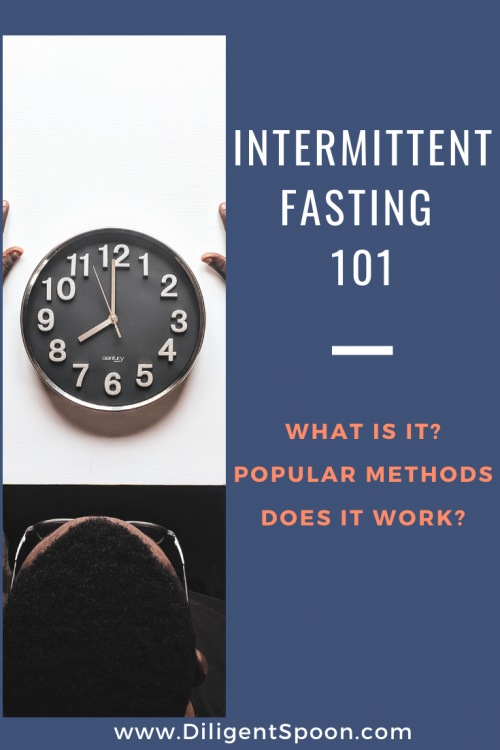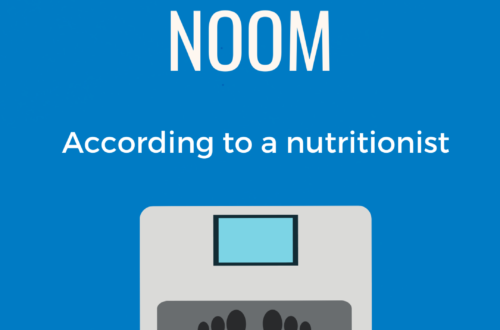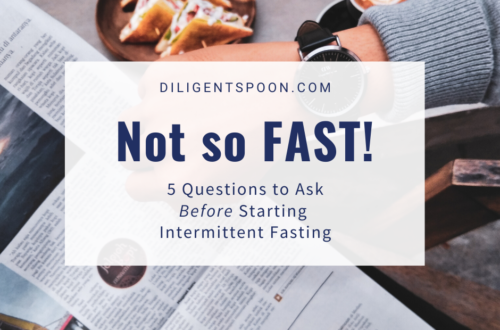
Intermittent Fasting 101
What is it?
Intermittent fasting is like regular fasting (not eating), except on a regularly-planned schedule, totally optional, and usually done to lose weight.
Intermittent Fasting is Hugely Popular
In 2013, the Canadian Medical Association Journal predicted that intermittent fasting (IF) would be the next big weight-loss fad. As we know, many predictions don’t come true, but this one sure did!
Intermittent fasting – rotating periods of eating and fasting – is a huge trend in diet culture right now.
A 2020 poll found that IF is one of the most popular weight-loss diet Americans have ever tried.
Yes, ever in recorded dieting history. An estimated 24% of US adults have tried intermittent fasting (IF) for weight loss. That’s over 50 million people!
Intermittent Fasting Defined
What the heck is intermittent fasting? In general, “fasting” is abstaining from food and beverages that contain calories for a certain period of time (sometimes allowing very reduced food/calorie intake). People have been plain ol’ regular fasting for ages, mainly in the form of health or spiritual rituals. These fasts range from 12 hours to AN ENTIRE MONTH.
The new trendy type of fasting – that is, intermittent fasting – was popularized fairly recently, starting in about 2012. Check out the “Learn more…” resources at the bottom of the post if you want to, um, learn more about how the recent IF came to be.
Try searching for “intermittent fasting” on the Internet – you’ll get a bazillion hits! Most of these sites report IF will help you lose weight, prevent heart disease, diabetes, even slow the aging process! If you’re curious about all these benefits (who wouldn’t be), I’ll write more about these in another post. Feel free to check out the references at the bottom of the post, too. IF is a complex topic, so before we talk about the benefits, let’s get clear on what it is.
The best definition for Intermittent Fasting I found in my research:
Intermittent fasting is a diet regimen that cycles between brief periods of fasting, with either no food or significant calorie reduction, and periods of unrestricted eating.
“Diet Review: Intermittent Fasting for Weight Loss.” The Nutrition Source, 22 May 2019, www.hsph.harvard.edu/nutritionsource/healthy-weight/diet-reviews/intermittent-fasting/.
Most of us have fasted 8 – 12 hours before a blood test or other medical procedure. Intermittent fasting is sort of like doing that, only every day, as part of one’s normal eating pattern.
NOTE: You may already be an Intermittent Faster! If you eat dinner at 6-7pm and then don’t eat anything until mid-morning the next day … Congratulations! You’re a dietary trendsetter.

Intermittent fasting comes in many different flavors (pun). The three most popular ones are:
Alternate-day, Modified, and Time-restricted fasting
There may be more than three types; in fact, I’m sure there are, however, these are the three types of IF that seem to get the most attention.
1. Alternate-Day Fasting
- You alternate days of fasting with days of unrestricted eating.
- On fasting days, no foods or caloric beverages are allowed – zero calories.
- On non-fasting days, you can eat normally. Healthy eating is encouraged.
- Some people prefer a modified alternate-day fasting, where they eat up to 500 calories on fasting days, then eat whatever they want on eating days.
Example Schedule for Alternate-Day Fasting:
| Day 1 | Day 2 | Day 3 | Day 4 | Day 5 | Day 6 | Day 7 |
|---|---|---|---|---|---|---|
| EAT normally | 24-Hr FAST OR eat only a few hundred calories | EAT normally | 24-Hr FAST OR eat only a few hundred calories | EAT normally | 24-Hr FAST OR eat only a few hundred calories | EAT normally |
2. Modified Fasting
- Modified Fasting is very similar to Alternate-day fasting, except on fasting days, you limit food intake to 20-25% of normal or needed calories. That’s usually about 500 calories for women, 600 calories for men.
- This is sometimes synonymous with the 5:2 diet/fast because most plans call for 5 non-fasting days and 2 fasting days per week.
Example Schedule for Modified Fasting – the 5:2 Method:
| Day 1 | Day 2 | Day 3 | Day 4 | Day 5 | Day 6 | Day 7 |
|---|---|---|---|---|---|---|
| EAT normally | Women: 500 calories Men: 600 calories | EAT normally | EAT normally | Women: 500 calories Men: 600 calories | EAT normally | EAT normally |
3. Time-Restricted Fasting
- You limit food intake to specific hours of each day, usually for 8 – 12 waking hours. A common plan is 16/8 method, which means that you don’t eat or drink any calories for 16 hours of each 24-hr period.
- For example, meals are eaten from 12pm – 8pm every day, fasting during the remaining hours of the day.
Example Schedule for Time-Restricted Fasting – 16/8 Method:
| Day 1 | Day 2 | Day 3 | Day 4 | Day 5 | Day 6 | Day 7 | |
|---|---|---|---|---|---|---|---|
| Midnight | FASTING | FASTING | FASTING | FASTING | FASTING | FASTING | FASTING |
| 4 AM | |||||||
| 8 AM | |||||||
| 12 PM | EATING | EATING | EATING | EATING | EATING | EATING | |
| 4 PM | |||||||
| 8 PM | |||||||
| Midnight | FASTING | FASTING | FASTING | FASTING | FASTING | FASTING | FASTING |
Bottom Line: Is It Safe? Does It Work?
Intermittent fasting is considered safe, especially when compared to diets that require supplements or exclude entire food groups. Human bodies are designed to handle going without food for a long period of time. Still, there are certain groups of people – pregnant or breastfeeding women, athletes – who might want to avoid intentional fasting.
Intermittent fasting is a diet plan that has strict periods of time when you can and cannot eat. Research shows that YES, intermittent fasting does lead to weight loss. It’s been shown to be at least as effective as low-calorie or other diets.
The questions are:
- What impact does IF have in the long term?
- In other words, is this pattern of eating/not eating something most people can stick with? Read more at my post on fad diets.
- How does it work?
- What are the health benefits and risks?
If you have tried intermittent fasting, I’d love to hear about your experience! Please comment, email me at [email protected], or join the conversation on social media.
Side Note: I personally do not support or oppose intermittent fasting as a way to lose weight. For me, the most important part about any eating plan is that it works for you, is something you can maintain, and aligns with your health goals.
Learn More About the Origins of Modern IF
Mosley, Michael, and Mimi Spencer. The Fast Diet. Short Books, 2014.
Harrison, Kate. The 5:2 Diet: Feast for 5 Days, Fast for 2 Days to Lose Weight and Revitalize Your Health. Ulysses Press, 2013.
Fung, Jason. The Obesity Code: Unlocking the Secrets of Weight Loss. Greystone Books, 2016.
References
“5:2 BASICS.” The 5-2 Diet Book, 12 Apr. 2015, the5-2dietbook.com/basics.
Ballard, Jamie. “Americans Say This Popular Diet Is Effective and Inexpensive.” YouGov, YouGov, 24 Feb. 2020, today.yougov.com/topics/food/articles-reports/2020/02/24/most-effective-diet-intermittent-fasting-poll.
“Diet Review: Intermittent Fasting for Weight Loss.” The Nutrition Source, 22 May 2019, www.hsph.harvard.edu/nutritionsource/healthy-weight/diet-reviews/intermittent-fasting/.
Fung, Jason. The Obesity Code: Unlocking the Secrets of Weight Loss. Greystone Books, 2016.
Gordon, Barbara. “What Is Intermittent Fasting.” EatRight, www.eatright.org/health/weight-loss/fad-diets/what-is-intermittent-fasting.
Harrison, Kate. The 5:2 Diet: Feast for 5 Days, Fast for 2 Days to Lose Weight and Revitalize Your Health. Ulysses Press, 2013.
Mosley, Michael, and Mimi Spencer. The Fast Diet. Short Books, 2014.
“Preferred Diets. Fieldwork Dates: 3rd – 6th January 2020, US_nat_int Sample: 3rd – 6th January 2020.” YouGov plc 2020.
Tello, Monique. “Eat Only Every Other Day and Lose Weight?” Harvard Health Blog, 5 Aug. 2019, www.health.harvard.edu/blog/eat-only-every-other-day-and-lose-weight-2017053111791.
Tribole, Evelyn. The Intuitive Eating Workbook. New Harbinger Publications, 2017.
“U.S. Census Bureau QuickFacts: United States.” Census Bureau QuickFacts, www.census.gov/quickfacts/fact/table/US/PST045219.
Wolfram, Taylor. “Investigating Intermittent Fasting: Food & Nutrition: From the Magazine.” Food & Nutrition Magazine, 4 Oct. 2018, foodandnutrition.org/from-the-magazine/investigating-intermittent-fasting/.






2 Comments
Pingback:
Pingback: